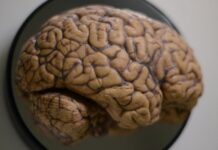
Tired of all those quick-fix weight-loss ads with the numerous question and exclamation marks???!!!! Science is here to save the day?!?!
Ahem. Seriously, according to Science (journal), scientists have found the trigger for obesity. In mice anyway; though the same processes are found in humans so…
One enzyme found in the brains of mice, and humans, O-GlcNAc transferase, or simply OGT, appears to control their ability to determine whether they feel full or not. Researchers removed the enzyme from one group of mice, and the critters ate twice their normal diet of food, tripling their body fat. In just three weeks, they went from shredded to Shrek-ed.
Interestingly, when the amount of food available to these mice was restricted to that of a normal meal, their weight remained normal. This suggests that the enzyme helps mice monitor the amount of food they have eaten. When the scientists increased the level of the enzyme in another group of rodents, these guys ate less than normal.
OGT was already associated with the nutrient and metabolic hormones chemical pathway, and works by modifying proteins by adding a glucose-like molecule to them. The proteins’ behavior is altered by the addition.
In order to figure out how it all worked, the scientists decided to turn to the time-tested top-secret technique that has already revealed many of nature’s secrets to us: Trial and Error. And so they removed the enzyme from mice, by removing the gene responsible for its production with a virus, and watched to see if anything changed.
The absence of the enzyme affected mice by changing how a region, called the hypothalamic paraventricular nucleus (PVN) in their brains, reacted to a large meal. Where a normal mouse’s PVN would light up after a large meal, the modified variants’ PVN did not activate.
“When the type of brain cell we discovered fires and sends off signals, our laboratory mice stop eating soon after,” says Dr. Richard Huganir, lead author of the study and director of the Department of Neuroscience at the Johns Hopkins University School of Medicine. “The signals seem to tell the mice they’ve had enough.”
“That result suggests that, in these cells, OGT helps maintain synapses,” he said. “The number of synapses on these cells was so low that they probably aren’t receiving enough input to fire. In turn, that suggests that these cells are responsible for sending the message to stop eating.”
The researchers then genetically modified the PVN of the already-genetically-modified mice so that it would be receptive to blue light, and then shone a blue light to artifically reactivate the PVN.
They found that the PVNs of modified mice activated, and they suddenly lost their appetite and started eating less on their own. The OGT pathway is known to affect obesity in people, and this research suggests that we too could benefit from “Weight Loss Secrets That Only Mice Know?!®” via techniques that modify the release of OGT or affect the sensitivity of the PVN.
Sources: Science , ars technica, Science Daily
This article (Seriously: Off-Switch for Obesity found in the Brain) is a free and open source. You have permission to republish this article under a Creative Commons license with attribution to the author(CoNN) and AnonHQ.com.





Wow that’s actually surprising!
Yes, please. When will this be in a pill form? 🙂
Sign me up!
So give me the pill that modifies my gene and everyone invest in blue paint.
Look at some of the research that Robert Lustig has done
https://www.youtube.com/watch?v=P3WkXJokBAU
Always these new scientific facts on weight loss in the brain or body but never does any of this reach the populists that need it to help in weight reduction. Some say requires number of years of testing etc. but in my 69 years I have yet to see any medications or methods for weight loss that have been prophesied for use by general public.